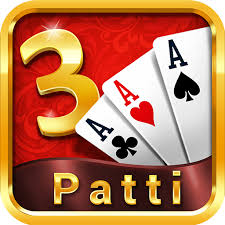Teenpatti, often referred to as “Indian Poker,” is a classic card game that has captivated players for generations. Originating from India, this game combines elements of strategy, skill, and luck, making it a favorite pastime at social gatherings and family events. With its deep-rooted cultural significance and the rise of digital versions, Teen Patti continues to be a beloved card game both in its traditional form and as a modern mobile game. This article explores the origins of Teen Patti, its gameplay, and its evolution into the digital age.
Origins and Cultural Significance
Teen Patti is believed to have originated in India, with its name translating to “Three Cards” in Hindi. Traditionally played with a standard deck of 52 cards, the game’s simplicity and strategic depth have made it a staple of Indian social life. Played during festivals, weddings, and family gatherings, Teen Patti brings people together for a shared experience of fun and camaraderie.
Gameplay Overview
Basic Rules
Teen Patti is played with three cards dealt face down to each player. The objective of the game is to have the best hand or to bluff opponents into folding. The game combines elements of poker with unique Indian twists, creating an engaging experience for players.
Hand Rankings
In Teen Patti, the hand rankings are similar to poker, though they may vary slightly depending on regional rules. Common hand rankings include:
- Trail (Three of a Kind): Three cards of the same rank.
- Pure Sequence (Straight Flush): Three consecutive cards of the same suit.
- Sequence (Straight): Three consecutive cards of different suits.
- Color (Flush): Three cards of the same suit, but not in sequence.
- Pair: Two cards of the same rank.
- High Card: The highest card if no other hand is made.
Betting and Bluffing
Betting and bluffing are crucial aspects of Teen Patti. Players take turns to place bets, raise, or fold, depending on the strength of their hand or their ability to bluff opponents. The game’s strategic depth comes from reading opponents’ actions and making calculated decisions based on limited information.
Evolution into the Digital Age
With the advent of technology, Teen Patti has evolved from a traditional card game into a popular digital format. Online and mobile versions of Teen Patti offer enhanced features and a broader reach, making the game accessible to players around the world.
Online and Mobile Versions
Teen Patti is now available as a mobile app on both Android and iOS platforms. These digital versions offer several enhancements:
- Real-Time Multiplayer: Players can join live tables and compete against others from around the globe.
- Variety of Game Modes: Digital versions offer multiple modes, including classic Teen Patti, game variations like Joker or Muflis, and special tournaments.
- Daily Rewards and Bonuses: Players can earn rewards and bonuses by logging in daily, participating in events, and completing challenges.
- Social Features: In-game chat, friend lists, and private tables allow players to connect and play with friends and family.
Benefits of Digital Teen Patti
Digital Teen Patti offers several advantages over traditional play:
- Accessibility: Players can enjoy the game anytime and anywhere, without the need for physical cards or a large group.
- Convenience: Mobile apps streamline gameplay, handle card dealing, and manage bets, making the game easier to play.
- Enhanced Experience: Modern graphics, animations, and sound effects enhance the overall gaming experience.
Conclusion
Teen Patti remains a cherished card game with deep cultural roots and widespread appeal. Whether played traditionally at social gatherings or enjoyed digitally through modern apps, Teen Patti offers a unique blend of strategy, skill, and excitement. Its ability to bring people together and its evolution into the digital age ensure that Teen Patti will continue to captivate players for generations to come. Download a Teen Patti app today or gather your friends for a traditional game, and immerse yourself in the timeless fun of this classic card game.







